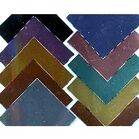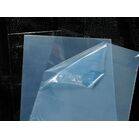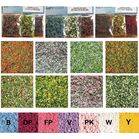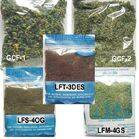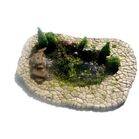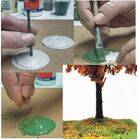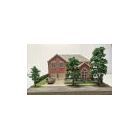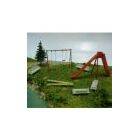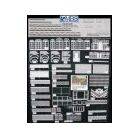The Power of Scale Models in Selling Real Estate

The Power of Scale Models in Selling Houses
In the real estate market, standing out from the competition can be a challenge. One effective tool that has been gaining traction among real estate professionals is the use of scale models. These miniature representations of properties offer a unique way to showcase a home's potential and can significantly impact a buyer's decision-making process. Here's why scale models are so effective in selling houses:
1. Visualization of Space and Design
One of the biggest hurdles in real estate is helping potential buyers visualize a property’s layout and design. Floor plans and photographs can provide some insight, but they often fall short in conveying the spatial relationships and overall feel of a property. Scale models bridge this gap by providing a three-dimensional perspective. Buyers can see exactly how rooms are arranged, the flow between spaces, and how the property fits into its surrounding environment.
2. Enhancing Understanding of the Property
For complex properties or new developments, scale models offer a tangible representation of what buyers can expect. They can highlight unique features such as landscaping, outdoor areas, or specific architectural elements that might not be fully captured in standard images or descriptions. This can be particularly useful for new builds where the property is still under construction or in the planning stages.
3. Engaging and Interactive Experience
Scale models engage buyers in a way that static images and text cannot. They invite potential buyers to explore and interact with the model, which can help them feel more connected to the property. This interactive experience can foster a stronger emotional connection and increase the likelihood of a sale. Some models even incorporate moving parts or lights to enhance the experience further.
4. Showcasing Customization Options
For properties that offer customization options, scale models can be invaluable. Buyers can see different design choices or layouts represented in the model, helping them envision how the space could be tailored to their preferences. This can be particularly appealing in new developments where buyers have the opportunity to personalize their homes.
5. Marketing and Sales Tool
Scale models serve as an excellent marketing tool. They can be used in brochures, online listings, and open houses to capture attention and differentiate a property from others on the market. A well-crafted scale model can make a memorable impression, which is crucial in a competitive real estate market.
6. Building Trust and Credibility
Using scale models demonstrates a commitment to transparency and detail. It shows that the seller or developer has invested in providing a clear and accurate representation of the property. This can build trust with potential buyers, as they feel more confident in their understanding of what they are considering purchasing.
7. Creating a Sense of Scale
In some cases, buyers struggle to gauge the true size of a property from photographs alone. Scale models provide a concrete sense of scale, allowing buyers to better understand the proportions of the property and its various features. This can be particularly useful for large estates or properties with complex layouts.
In conclusion, scale models offer a dynamic and effective way to market and sell houses. They enhance visualization, engage potential buyers, and provide a clear representation of the property. By incorporating scale models into their sales strategy, real estate professionals can create a more compelling and memorable experience for buyers, ultimately leading to successful sales.



